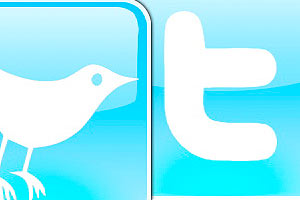
The public has an expectation of people in the limelight, TV presenter Jason Gunn says.
Gunn has grown up in the spotlight and is more than aware of the responsibilities that come with it.
Others, not so much.
In the past, members of Australian children’s entertainment troupe Hi5 have got themselves into hot water by posting steamy, or at the very least drunken, pictures of themselves on Twitter.
In New Zealand, children’s television presenter Morgan Bradley, 23, who with Kayne Peters hosts Kidzone, has recently “retweeted” about the PH level of a certain part of the female anatomy.
She also tweeted about “s——g” herself because she was going to the dentist, and posted topless pictures of friends.
The tweets are in among others spruiking her work as a children’s TV host, talking about having just sung to a large number of toddlers, and encouraging people to see her performances for a live Kidzone tour.
Kidzone touts itself as a show about Kiwi children having fun while learning about themselves and their community. Bradley’s Twitter account is followed by only 70 people but it is accessible to anyone who uses the internet.
TVNZ spokeswoman Megan Richards said Bradley’s tweets were “generally cheerful and charming and absolutely nothing to worry about”.
Richards said: “We would be very disturbed indeed if we thought any of Morgan’s target demographic – preschool children – were on Twitter.
“We are also very confident that most adults reading her Twitter feed will be able to tell the difference between Morgan the on-screen presenter and Morgan the young woman with her own life.”
However, she said TVNZ did expect presenters to be aware of the extra scrutiny they were likely to be under, and to “adapt their remarks and behaviour appropriately”.
Child psychologist Rebecca Daly-Peoples said people needed to remember that children’s TV presenters were often themselves young people, however that did not diminish their need for responsibility.
“I think they are a bit naive.”
Daly-Peoples said children would “build up a perception” of a presenter being a certain way and because of that, they became role models.
“They need to learn that responsibility. With children under five, they don’t make any distinction with television and reality so with kid’s TV presenters they really connect with them.”
Gunn agreed: “At the end of the day you are a brand. You can’t be out there in the living rooms of New Zealand telling children one thing and be on Facebook and Twitter telling other people other stuff.
Ad Feedback
“Much like a favourite aunt or uncle, you chat with your niece and nephews but you don’t engage them in every other part of your life, because that would be inappropriate. It’s a very similar sort of thing.”
Gunn said it would be “crazy” if presenters didn’t realise that everything that goes on any social media “is for anyone”.
“You don’t want to be two-faced. Just because you make children’s television and talk about cartoons . . . doesn’t mean everything you do has to be about children. You drive a car, you could be married, you could be having sex, dare I say it.
“You just have to be very careful what you talk and how you talk and what you comment about. You are a role model. If you are on children’s television you accept that role.”
–